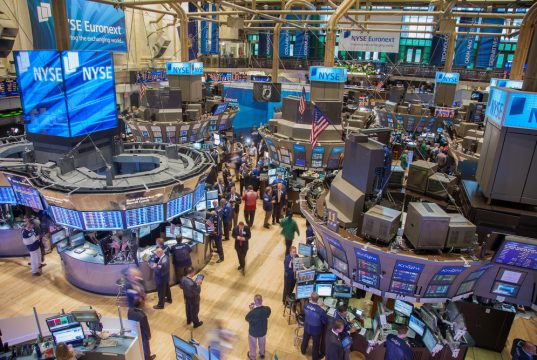Winners and Losers of 2024: The Best and Worst Stocks of the Year
As we kick off 2025, it’s time to reflect on the extremes of 2024—a year of standout winners and painful underperformers. The S&P 500 surged by an impressive 24%, far exceeding its historical average, but not every stock participated in the rally. While some names rode powerful trends like artificial intelligence (AI), others were weighed down by industry-specific struggles and strategic missteps. Here’s a look at the three best and worst performers of the year, along with what lies ahead for these stocks.
The Worst Performers
Walgreens Boots Alliance (NASDAQ: WBA) – A Painful Slide for Pharmacy Retail
Walgreens was the S&P 500’s worst performer in 2024, plummeting over 64%—its largest annual decline on record. The pharmacy chain faced mounting challenges in its retail business, culminating in a disastrous third-quarter earnings miss that sent shares tumbling by more than 20% in a single day. Although there were brief rebounds, such as when rumors of a buyout by private equity firm Sycamore surfaced, the stock’s performance remained grim.
Adding insult to injury, Walgreens was removed from the Dow Jones Industrial Average after just six years. The average analyst holds a “neutral” rating, with a modest 5% upside projected, but major structural challenges and a highly competitive retail pharmacy market suggest a long road to recovery.
Intel (NASDAQ: INTC) – A Chip Giant’s Worst Year
Intel closed 2024 down over 60%, marking its worst year ever. The semiconductor company struggled to keep pace with rivals like AMD and Nvidia, particularly in the rapidly growing AI market. The year saw Intel lose its spot in the Dow to Nvidia, further emphasizing its fall from grace.
CEO Pat Gelsinger’s retirement in December capped a tumultuous year for the company. Analysts remain cautious, with most assigning “hold” ratings. However, some see potential upside, with a projected 26% recovery on the horizon. Still, Intel faces a challenging path to regain its footing in an industry dominated by faster-moving competitors.
Moderna (NASDAQ: MRNA) – Post-Pandemic Struggles
Moderna shares fell more than 60% in 2024, their steepest annual decline to date. The biotech company struggled as investor interest shifted from COVID-19 vaccines to other high-growth areas like weight-loss drugs. Weakness in European markets, declining U.S. vaccine demand, and over $1 billion in planned cost cuts highlighted a difficult year.
The political landscape added to the pressure, with President-Elect Donald Trump appointing vaccine skeptic Robert F. Kennedy Jr. as Health and Human Services Secretary. While analysts project an 87% upside from current levels, the uncertainty surrounding Moderna’s ability to transition beyond COVID-19 vaccines remains a significant risk.
The Best Performers
Palantir (NYSE: PLTR) – Dominating the AI Revolution
Palantir was the undisputed star of 2024, skyrocketing over 349%—its best year since going public in 2020. The company’s AI-driven software gained traction in both government and commercial sectors, with applications ranging from missile production to enterprise digitization.
Added to the S&P 500 and Nasdaq-100 this year, Palantir became a favorite among retail investors. While Wall Street remains cautious about sustainability, with some analysts projecting a potential 43% decline, the company’s position at the intersection of AI and national security suggests it’s just getting started.
Vistra (NYSE: VST) – Powering AI Infrastructure
Vistra surged over 263% in 2024, buoyed by its role in supporting the AI boom. As independent power producers with nuclear and gas capabilities gained traction among data center builders, Vistra emerged as a top pick.
Guggenheim Securities highlighted Vistra’s dual offerings as a unique advantage, allowing it to benefit from a variety of energy demand scenarios. With every analyst rating the stock a “buy,” the typical price target suggests an additional 16% upside. Vistra’s diversified energy portfolio and strong positioning make it a compelling pick for 2025.
Nvidia (NASDAQ: NVDA) – AI’s Biggest Winner
Nvidia capped 2024 with a 177% gain, securing its place as one of the most influential stocks of the year. The chipmaker’s dominance in AI hardware cemented its role as a market leader, with major wins like being added to the Dow Jones Industrial Average.
Wall Street remains optimistic, projecting nearly 24% upside as AI investments continue to drive demand for Nvidia’s products. Bank of America noted that the company’s Blackwell deployment ramps, driven by cloud customers, should sustain growth into the first half of 2025.
Key Takeaways for Investors
2024 offered a stark reminder of the market’s duality. The rise of AI-powered growth stories like Palantir and Nvidia highlights the importance of aligning with transformative trends, while the struggles of Walgreens, Intel, and Moderna underscore the risks of relying on legacy strategies in rapidly evolving industries. As we enter 2025, the best opportunities may lie in identifying where innovation meets execution.














